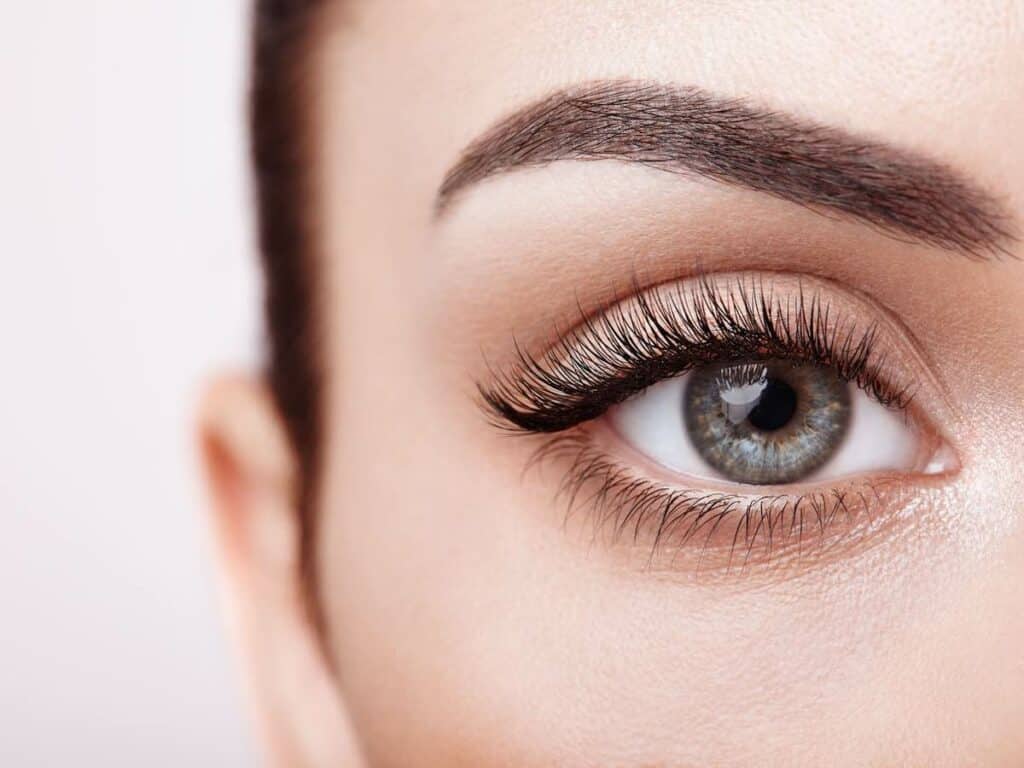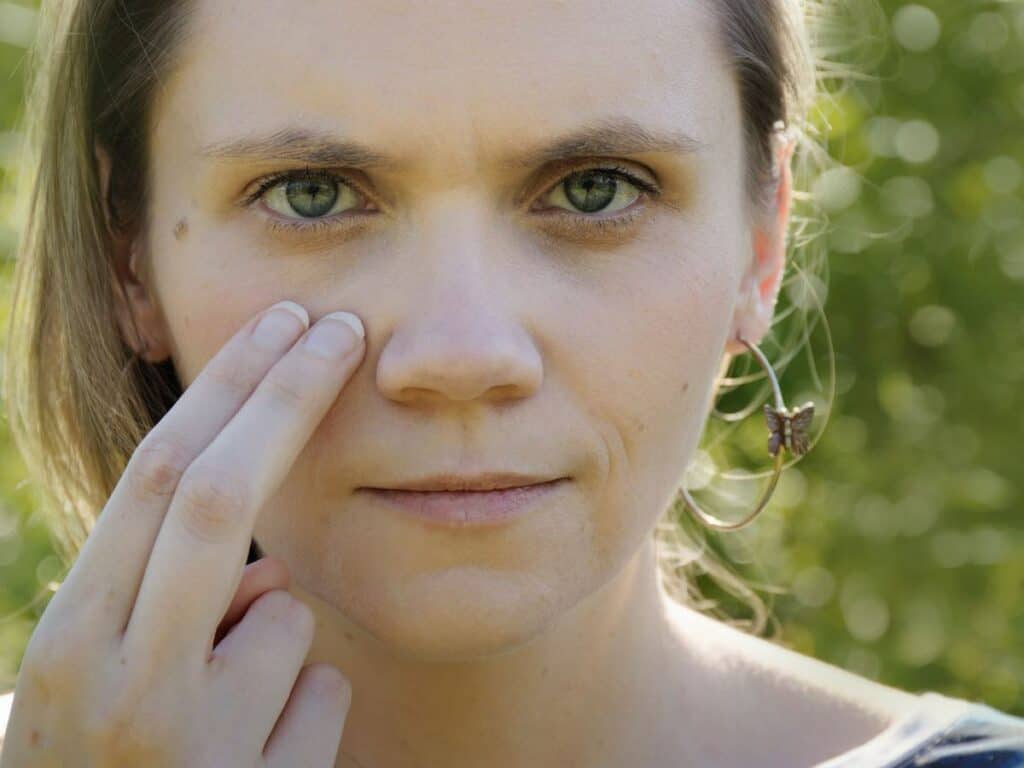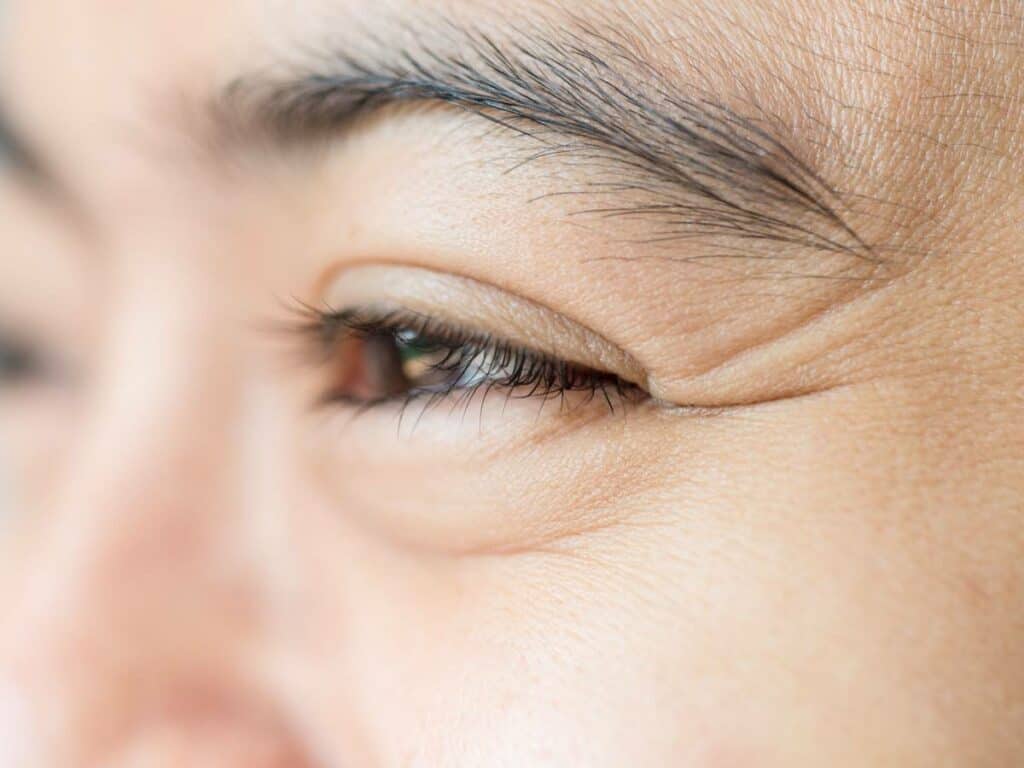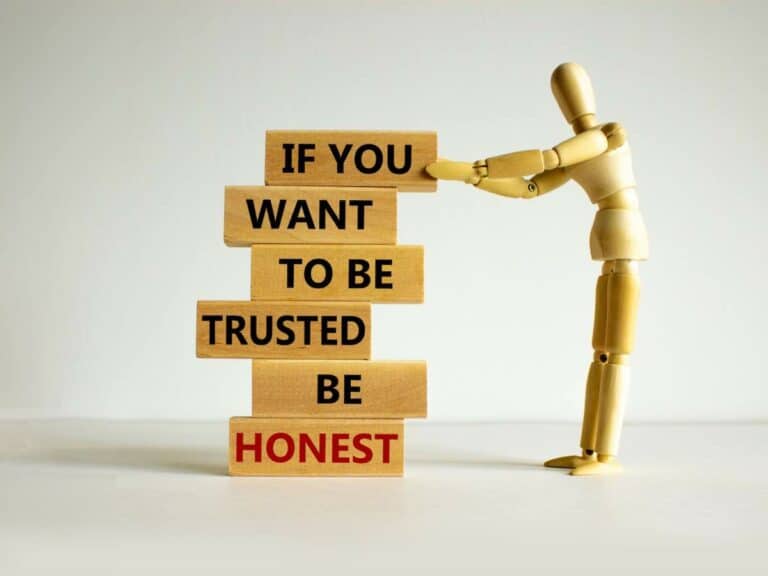How to Detect Lies Through Someone’s Eyes
Other than being windows to the soul, the eyes can also be the key to telling whether or not a person is lying. It’s all about psychology and a dash of observation skills. You should, of course, know what to look for.
You can detect lies by means of the eyes of others by observing how often they blink or how long their eyes are closed. Deceit can also be revealed by the wrinkles around the eyes when they smile or squint. The size of the pupils can also out liars. Too much or too little eye contact can be an indicator of dishonesty, too.
By minding their eyes, you can have an idea of what’s lurking in people’s minds.
The secrets to knowing whether someone is secretly lying that I will share below won’t make you a psychologist, an NBI agent or a walking and talking lie detector machine. Be warned: use the tips below with caution to avoid hurting the feelings of family and friends or ruining relationships.

1. Scrutinize the Size of the Pupils
The openings in the center of your eyes are referred to as pupils. They constantly change in size, depending on the amount of light in the environment — they become larger when there’s little amount of light around and become smaller when there’s plenty of light available.
Besides how much light is present, the size of the pupils can be affected, too, by a few other factors.
Each time your brain is working hard, your pupils dilate. And one of the things that can cause an increase in cognitive load is lying — it’s simply harder for the brain to plan, design and deploy something that’s untrue.
Deceitfulness can also leave you feeling guilty, ashamed or fearful, which can trigger the fight or flight response. This autonomic physiological reaction to an event, in particular something that is perceived to be stressful or dangerous, causes so many changes in the body, and one of them is the dilation of the pupils.
Of course, there are instances when it can be hard to rely on the size of the pupils in determining whether the person in front of you is either being truthful or engaging in deception.
Dark-colored eyes, dark-colored glasses, insufficient lighting — these can make it hard to check the pupils.
Keep in mind, however, that lying is not the only thing that can make the pupils go bigger. Many different emotions can also cause them to get larger. As a matter of fact, activity in the regions of the brain that make you feel excitement, fear and other emotions can increase pupil dilation.

2. Count the Frequency of Blinks
According to health authorities, a person blinks anywhere from 15 to 20 times per minute. And just like blood pressure, heart rate and respiratory rate, the number of times a person blinks tends to increase whenever he or she is feeling stressed or anxious, such as when lying and hoping not to get caught, too.
It is said that someone who is being deceitful may blink 5 to 6 times in rapid succession.
The activation of the fight or flight response makes the eyes more sensitive to light — it’s important to see the threat or danger more clearly in order to increase your survival rate.
However, there’s an important matter about blinking you need to know when attempting to determine the veracity of a person: rapid blinking when lying is often preceded by the eyes without blinking for a while. Perhaps it’s a conscious attempt by the individual to appear more convincing. Or it could be due to the extra cognitive load of lying.
But it’s a must to keep in mind, too, that many other things can affect the rate of blinking.
Excessive blinking can be due to things such as refractive error, multiple sclerosis or Tourette syndrome. Or it can also be blamed on blepharospasm, which is a neurological disorder that affects the muscles that control the eyelids. Irritation, habits, environmental factors — these are other things that can cause a person to blink more.
The bottom line is an increased frequency of blinking can either be due to being deceitful or something else, like a small particle or an underlying medical condition that needs to be checked by a doctor.
3. Count How Long the Eyes Remain Closed
When a person blinks, his or her peepers are closed for only a third of a second. But if the eyes remain closed for about a second or longer, there’s a possibility for the individual to be lying to you.
Closing the eyes is a form of defense mechanism when one perceives the presence of danger.
It could be due to a handful of reasons why it’s not uncommon for some deceitful people to shut their eyes for a while. Some may be doing it to avoid eye contact for fear that it will give them away. Others may be doing it subconsciously to reduce external stimuli, which can help them come up with a convincing lie so much better.
Deceptive individuals, according to former CIA officers, have the tendency to often hide their eyes when being untruthful. The reason? They just want themselves to be shielded from the reactions of the people who are being lied to.
And shielding the eyes can be done in a couple of ways: covering them with the hands or closing them.
Similarly, it’s not uncommon for untruthful persons to close their eyes when answering a question that does not necessarily require any reflection beforehand in order to be answered. During a lie detector test, these questions are referred to by examiners as irrelevant questions — or questions that are not stressful or uncomfortable to answer.
Irrelevant questions are important yes or no questions to ask during a polygraph examination. Although they are not related to the investigation, they help establish baseline readings for when a person is truthful.

4. Watch the Movement of the Eyes
Before anything else, let’s get this straight: some of the things said about the movement of the eyes of deceptive individuals have been proven wrong by more recent studies. So, in other words, they are no longer considered true these days, although I will still mention them shortly in case you have no idea what those claims were.
Lying can be quite uncomfortable and there are a bunch of things that people who feel uncomfortable do with their bodies. And when it comes to the touted windows of the soul, they tend to dart back and forth.
Earlier while talking about blinking, I mentioned the fight or flight response.
It’s the very same response that can cause your eyes to be more sensitive to light and thus blink rapidly. It can also make your eyeballs move quickly from one side to the other — because you feel that you are in some form of danger, your instinct is telling you to look for an escape route in order to stay alive.
For the longest time, people believed that those who glance up and to the left are truth-tellers and those who glance up and to the right are liars. The reason behind this notion, presumably, is that the right side of the brain serves as the creative side, and it definitely requires a lot of creativity to fabricate a believable lie!
Especially since it was reported to be used by police officers and criminal investigators in interrogating suspects, people swore by it, intently monitoring the eye movements of those they are talking to.
But, as mentioned earlier, numerous studies conducted in recent years have debunked the idea.
Researchers from the UK are some of those who busted the myth. The said researchers conducted a total of 3 experiments, including an investigation of video archives of more than 50 individuals making public pleas on behalf of their missing relatives, about 50% of whom are known to have been lying based on the turnout of the cases.
None of their experiments provided support for the idea that certain eye movements, including those that have led people to believe they’re the gold standard, are signs of deception.

5. Check for Wrinkles Around the Eyes
Believe it or not, there are as many as 19 different types of smiles, says a CNN Health report.
People smile not only when they are feeling glad or happy but also when embarrassed, confused, horrified, disappointed or frustrated, among others. It’s also not uncommon for a lot of people to smile when they’re telling a lie.
And this brings us to another way of detecting lies through the eyes: by observing the presence of wrinkles beside the eyes and bunched skin underneath them. These are some eye indications of what’s referred to as the Duchenne smile, which is widely regarded as the most authentic expression of happiness.
It’s after a mid-19th century neurologist from France, Guillaume Duchenne, who conducted experiments on facial muscles, which the Duchenne smile was named. This type of smile involves the utilization of the orbis oculi muscle, over which people have no control — if they are able to use it, then they must be genuinely pleased.
A Duchenne smile can be revealed by the eyes. Because it raises the cheeks, crinkles form the skin under and at the corner of the eyes. Without them, the smile cannot be considered the Duchenne kind.
Based on a study published by the Association for Psychological Science (APS), which involved having the participants consisting of young nurses watch a disturbing video and then tell the interviewer that they had actually seen something pleasant, people gave fewer Duchenne smiles when lying.
The experiment also discovered that the smiles of deceitful participants featured either a raised upper lip, which provides a hint of disgust, or lowered corners of the lips, which can be associated with disgust.

6. Observe for the Presence (or Absence) of Eye Contact
Interest, passion, respect, dominance and even hostility — these are some of the non-verbal communication cues that can be associated with eye contact. The lack of eye contact is linked to many things, too, including lying.
Well, it depends on who you ask.
According to a study, deceptive individuals deliberately make more eye contact than truth-tellers. While the said study did not include identifying the reasons why liars have a penchant for it, experts hypothesized that eye contact is often forced in an attempt to convince the people being lied to.
They add that it’s also probably to check if the persons in front of them appear to believe them — nothing can make liars feel relieved more than seeing that their fibs are being bought!
It’s common for a lot of individuals to assume that deceivers will try to avoid making eye contact as much as they possibly can because of guilt or embarrassment or even out of fear that the ones they are lying to might be able to read their thoughts and emotions through their eyes.
However, an online article said that there had been more than 30 studies that looked into the relationship between avoidance of eye contact and lying. Most of them, as it turned out, revealed that liars avoided eye contact no more than truthful individuals. Newer studies add that eyes can indeed give liars away, but not in stereotypical ways.
When it comes to determining deception by means of eye contact, establishing a baseline is key.
Is the person known to make eye contact because he or she is self-confident, self-assured, sociable or extroverted and then, for some reason, suddenly stopped looking directly at your eyes? Or is he or she not particularly known for having eye contact and then, seemingly out of the blue, started to look you in the eye?
Then something is not right, and being told a lie is probably one of the reasons why.
7. See If the Person Squints
Whenever a person lies, his or her stress levels increase. The body releases adrenaline, which is a stress hormone, in order to prime the individual for either fighting the perceived threat or fleeing the scene of danger.
The said hormone causes all sorts of changes in the body. Some of the physiological changes that happen when adrenaline is suddenly present in the bloodstream include elevated blood pressure, faster heart rate, more rapid breathing and increased sweating — all the things that make a polygraph machine useful for identifying signs of deception.
Also sometimes referred to as epinephrine, adrenaline also causes the muscles to tense.
Large muscle groups that are major role players during the fight or flight response are not the only ones that become taut but also smaller ones, such as those that are located around the eyes. This can squeeze and change the shape of the eyeballs, causing the vision to be blurry. Squinting can help reshape the eyeballs and correct vision.
The irises, which are the colored portion of the eyes and are actually sphincter muscles, are affected by adrenaline, too. As a result, the pupils dilate, thus causing more light to enter the eyes.
Because of this, it’s not unlikely for you to squint in an attempt to reduce the amount of light that hits your pupils.
When everything is considered, it isn’t surprising why squinting is something that some deceptive individuals involuntarily do each time they are telling a lie. In some instances, they do it voluntarily to try their best to convince the people they are talking to that they are stating nothing but the truth.
Just Before You Attempt to Judge Someone by the Eyes
They say that the eyes are windows through which you can have a glimpse of a person’s emotions and even thoughts. The peepers can also serve as an indicator of one’s veracity if you know what to look for.
Above, I shared with you some effective, albeit not totally foolproof, ways to detect lies through the eyes. The size of the pupils, frequency of blinks, eye movements and others allow you to come up with an idea of whether or not the individual in front of you is lying — just like a polygraph machine, but minus the sensors, cables and switches.
But, as I mentioned a handful of times, those tips and tricks are not 100% infallible.
Other than the eyes, also consider other areas of the face and the rest of the body when trying to figure out if someone is truthful or deceitful. Various non-verbal communication cues can help you nail it most of the time.
Determined to get to the bottom of things but not too confident with your eye-reading skills? An eye-scanning lie detector may help. As the name suggests, it’s some sort of a polygraph examination that monitors the eyes — their pupils and movement — rather than blood pressure, heart rate, respiratory rate and skin conductivity (sweating).
Invented in 2002, an eye-scanning lie detector, according to studies, is up to 88% accurate. An exam costs around $300. A conventional polygraph test, on the other hand, is anywhere from $200 to $800 on average.






